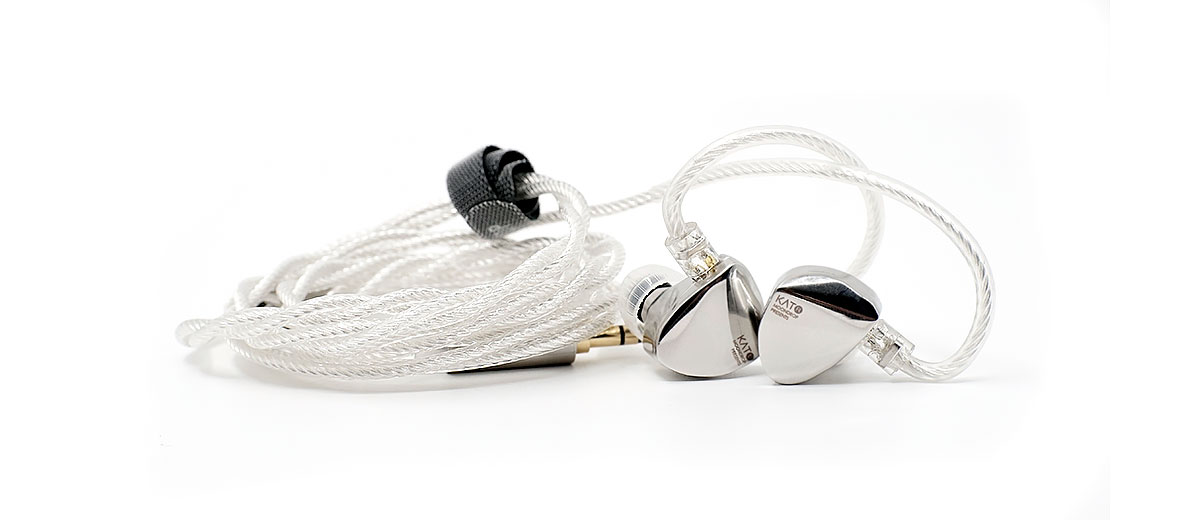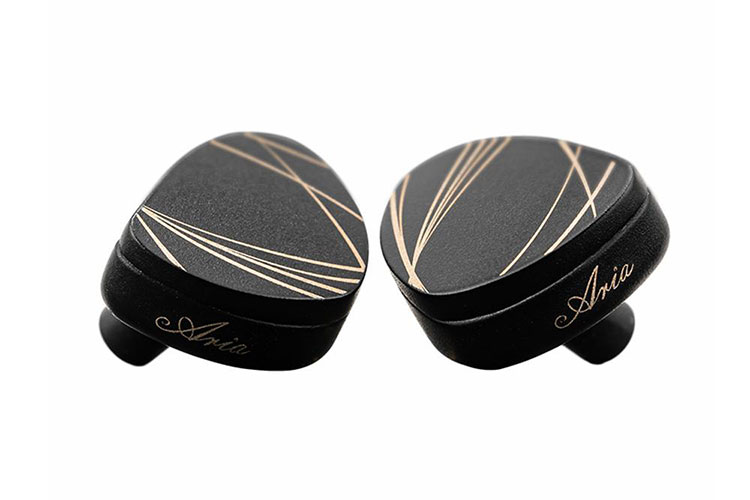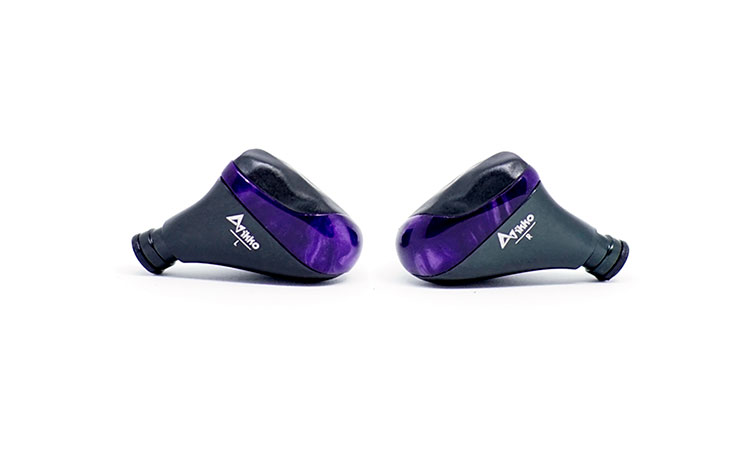Synergy
Efficiency
With an impedance of 32Ω and 123dB sensitivity, the KATO is fairly easy to drive. Both the iPhone SE and iBasso DX150 can power it with less than 50% of volume levels.
However, do note that there is a notable improvement on both soundstage and imaging with a good quality source such as the iBasso DX150 with AMP6. You will get a nice black background with no observed unwanted noise or background hiss.
Pairings
With the Moondrop KATO being easy enough to drive and having a neutral to natural sound signature with slightly elevated lows, pairing is really going to come down to personal tuning preferences.
For people sensitive to deep bass, it would be best to pair the KATO with a neutral-sounding source to lessen the lows such as the FiiO M11. The iBasso DX150 (AMP6) is known to have a more typical AK4490 physical bass and energetic upper mids to produce a more aggressive low-end response from the KATO.
Paired with the Kato, the overall sound signature is just right for my taste, neither dark nor bright, with a pleasant midrange presentation. The different frequencies complement each other, bringing an enjoyable listening experience.
Select Comparisons
Moondrop Aria
$79
Technical
Despite the price disparity, and both using a single dynamic driver implementation, I suspect a few Aria owners will be looking to the KATO as a worthy upgrade.
It is important to note that the single dynamic driver design in each is quite different. The Aria features a 10mm LCP diaphragm and CCAW voice coil dynamic driver while the KATO features Moondrop’s flagship 10mm ULT super-linear dynamic driver.
Both monitors include the familiar lightweight Japanese-made Daikoku CCAW voice coil, with the KATO having a lighter extra-fine upgrade.
Design
These two IEMs are very contrasting in design with the Aria having a matte-black finish looking like truffles in an expensive box of chocolates and the KATO having a shiny metal-polish finish looking like an elegant futuristic creation.
Both IEMs have an ear-hook design with a 2-pin 0.78 termination. The cable on the KATO does feel more high-quality and tangle-free than the Aria. Both cables are terminated with a 3.5mm plug, with the KATO having a straight jack while the Aria with an L-jack.
The two monitors wear comfortably over long periods. However, it is noticeable that the KATO had a slightly better fit than the Aria. Those comfortable ‘Spring Tips’ offer a more comfortable experience when wearing them.
Performance
Aria’s lows paled in comparison with the KATOs. Deep sub-bass extension from the KATO was barely felt in the Aria. Different tracks can say the same for the Aria, the lows are hollow compared to the thick lows of the KATO.
Aria’s take on male and female vocals is noticeably recessed and thinner. KATO has a more forward midrange region, with the vocal’s tonality sounding richer and more luscious. The voices sound more alive and pleasing to the ears.
Aria has a more elevated treble though. Although both have a very good treble extension, KATO felt tamer and more controlled. Certain tracks that were revealed to be a bit harsh on the Aria were not felt with the KATO.
Soundstage is also larger with the KATO, although not significantly. This is felt in vocal layering wherein backup vocals seem to have more width and depth compared to the Aria.
Both monitors have above-average imaging. Instruments sound natural and crisp. However, the KATO did sounds more multi-directional than the Aria. Sound is more spread out compared to the Aria.
It’s no surprise that KATO outperforms Aria in multiple aspects. The question is whether the added cost justifies the sound improvements it brings. Comparing the two side by side, I would definitely say KATO would be a significant upgrade for Aria owners: in aesthetics, accessories, and definitely in performance.
FIIO FH3
$129.99
Technical
The FiiO FH3 has a triple driver design with a 3-way configuration using one beryllium-coated dynamic driver for the lows, a single BA for the mids, and a single BA for the highs. The KATO, on the other hand, is equipped with a 10mm ULT super-linear dynamic driver.
Design
The FH3 shells are made of an aluminum-magnesium alloy that is corrosion-resistant. It has a matte-blue finish that follows a similar design pattern seen in the FH5 and FH7. The KATO has a similar metal body with a silver-mirror polish finish which is hard to ignore, especially when shined in the light.
The FH3 has an MMCX termination while the KATO has a 2-pin 0.78 termination, however, both cables are terminated with a 3.5mm plug. The only real difference in handling here is whether you want your jack straight or like the FH3, right-angled.
Overall, both monitors are comfortable to use with a similar fit and weight which is not surprising given that both sport a metal shell.
Performance
Both IEMs give a meaty rumble on the lows and a textured mid-bass. One noticeable difference between the lows on both IEMs is the level of the control. The FH3 had better control, with its take on a faster attack and decay compared to the KATO.
The midrange in both IEMs is elevated with a rich and detailed midrange. Instruments sound natural and well-textured, although FH3s have slightly thicker mid timbre compared to the KATO. Another noticeable difference between the two is that the KATO sounded more transparent and clearer than the FH3s.
Both have a similar treble tuning with the treble being neither dark nor bright. There is enough of an airy quality without either sounding shrill or harsh. The tuning of the two monitors is fairly balanced, regrettably lacking shimmer on the extended higher frequency.
These two monitors have good imaging with a multi-directional imaging capability and great separation. However, KATO does have a significantly wider soundstage and considerably greater depth compared with the FH3.
IKKO Gems
$199
Technical
The IKKO Gems OH1S has 2 drivers, a carbon nano dynamic coil for the lows and a Knowles BA driver for the mids and highs. The Moondrop KATO features its flagship ULT super-linear dynamic driver.
Design
The Gems OH1s has a triangular shell with a mixed-material design, a purple resin accent on a dark-grey aluminum shell. The KATO has a very contrasting look compared to the Gems with its silver mirror-polished multi-dimensional structural design.
The Gems use an MMCX termination while the KATO has a 2-pin 0.78 termination but both cables are terminated with a straight 3.5mm plug.
The IKKO Gems is noticeably lighter compared to the Moondrop KATO and uses a smaller form factor that sits a little better in my ears in terms of presence. Nevertheless, both monitors are comfortable to wear.
Performance
Gems’ bass response pales in comparison to KATO’s meaty rumble which is more powerful and controlled on the lows compared to the Gems. Gems lacked the lively thump that is delivered by the KATOs.
KATO has a forward midrange compared to the Gems with richer and superior textured vocals and instruments. Focusing on vocals and wind instruments, Gems sounded dry and thin compared to the KATO.
Both monitors do have a good treble extension. However, the Gems noticeably sounded airier and crisper. Tracks with cymbals have an added shimmer in the Gems, that is otherwise missed in the KATO.
The soundstage is similar in both monitors, spacious enough to discern width and depth and a lack of unidirectional imaging. Both IEMs also have good imaging, layering, and separation.
Our Verdict
Equipped with the new flagship ULT, (Ultra-Linear-Technology) super-linear dynamic driver, the Moondrop KATO continues the legacy of the single dynamic driver of Moondrop’s offerings.
It’s hard to deny that Moondrop has delivered a bang for the buck in-ear monitor that is definitely tough to beat in the sub $200 price range. Whether you’re just starting or upgrading from a sub $100 monitor, KATO will impress with its comfortable treble tuning paired with deep lows and pleasant midrange.
Moondrop KATO Technical Specifications
- Driver: 10mm-ULT dynamic driver
- Diaphragm: the 3rd generation DLC composite diaphragm
- Socket: 78-2Pin sunken design
- Housing: MIM stainless steel
- Nozzle: stainless steel *2, brass *2
- Cable plug: 3.5mm stereo single-ended plug
- Frequency response range: 10Hz-45kHz (IEC61094, Free Field)
- Effective frequency response range: 20Hz-20kHz (IEC60318-4, -3dB)
- Impedance: 32Ω±15% (@1KHz)
- Sensitivity: 123dB/Nrms (@1KHz)
- Distortion: < 0.15% (@1khz, AES17 20khz, A-weight)









